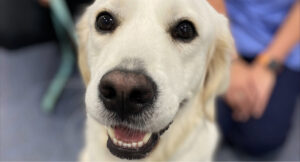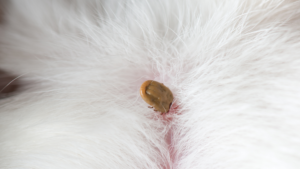What is elbow dysplasia?
Elbow dysplasia is a term for several developmental conditions affect the elbows. These conditions depend on which of the bones involved in the elbow joint have developed abnormally and how this has manifested. These causes of elbow dysplasia could include one or more of the following:
- Ununited anconeal process (UAP) where the ulna bone becomes separated from the anconeal process
- Fragmented medial coronoid process (FMCP), which is a failure of the coronoid process to unite with the ulna
- Osteochondritis dissecans (OCD) of the medial humeral condyle, where a cartilage flap is lifts away from the rest of the cartilage in the joint
What breeds are affected?
Elbow dysplasia can affect any breed of dog; however, it occurs more frequently in large and giant breed dogs.
According to PetSure data in the 2020 calendar year, prevalence in elbow dysplasia is noted in the following breeds:
| Breed | Prevalence |
| Bernese Mountain Dog | 1.95% |
| Newfoundland | 1.58% |
| Dogue de Bordeux | 1.34% |
| Rottweiler | 0.97% |
| Bullmastiff | 0.74% |
| Labrador | 0.70% |
| German Shepherd | 0.69% |
| Swiss Shepherd | 0.66% |
| Airedale Terrier | 0.54% |
| Labrador Retriever | 0.53% |
Prevalence = Total number of unique claiming pets / total number of insured pets across 12-month period. Excludes breeds with less than 500 active pet insurance policies.
Signs of elbow dysplasia
Elbow dysplasia commonly manifests as limping on one or both front legs. It may be intermittent, with periods where it seems to resolve. This can sometimes delay the diagnosis of Elbow Dysplasia, as the lameness may be assumed to be due to an injury that resolved. Sometimes pain may be noted if touching around the front legs. Some dogs may have difficulty rising or going up stairs. Often the signs of limping and pain worsen as the condition worsens. Signs of Elbow Dysplasia can start in young dogs from around five months of age. Adult dogs can also develop Elbow Dysplasia, so if your dog is limping, be sure to get in touch with your Vet who will be able to assist you.
Management of elbow dysplasia
Treatment and management depend on the underlying cause and severity of elbow dysplasia. If the problem is very mild, conservative management with rest, pain relief and weight loss for overweight pets may be sufficient to keep the pup pain free and mobile. In more severe cases surgery may be necessary. The surgical procedure deployed depends on the cause of the Elbow Dysplasia. Your Veterinary surgeon will be able to recommend the best procedure for your dog. In very diseased elbows, an elbow joint replacement may be needed. Arthritis is a very common secondary problem in Elbow Dysplasia as the elbow joint is inflamed and aggravated. Management of pain is very important to keep the pet patient happy and pain free.
How much does it cost to treat?
According to PetSure claims data from the 2020 calendar year, the average cost of a single treatment relating to elbow dysplasia was $627. The highest cost for a single treatment was $10, 936.
Is it covered by pet insurance?
Elbow dysplasia may be covered by Comprehensive Accidental Injury and Illness pet insurance policies administered by PetSure (check our brand partners at petsure.gholab.com.au/partners), unless related to a pre-existing condition or exclusion. Please refer to your policy documents including Certificate of Insurance and Product Disclosure Statement (PDS) for more information on whether this condition is covered under your policy.
Disclaimer: Reimbursement for these claims would be subject to limits, such as annual benefit limits or sub-limits, benefit percentage, applicable waiting periods and any applicable excess. Cover is subject to the policy terms and conditions. You should consider the relevant Product Disclosure Statement or policy wording available from the relevant provider.
REFERENCES
- VIN_Elbow_Dysplasia 9th June 2021
- ACVS_Elbow_Dysplasia 9th June 2021
Pet insurance can help by covering a portion of the eligible vet bill if the unexpected happens. Because it is difficult to predict the costs of veterinary care, it can help to have measures in place to help prepare for the unexpected. Check out our partner network and explore our policy tools to find a pet insurance policy.
Not all conditions or items are covered by Pet Insurance. Refer to the applicable Product Disclosure Statement for information about coverage and exclusions.








